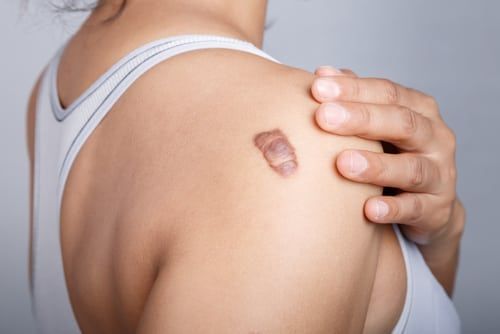Keloid scars are firm, smooth, hard growths due to spontaneous scar formation. They may arise soon after an injury or develop months later. Keloids may be uncomfortable or itchy and may be much larger than the original wound. Keloids may form on any part of the body, although the upper chest and shoulders are especially prone to them.
The precise reason that wound healing sometimes leads to keloid formation is unclear.
While most people never form keloids, others develop them after minor injuries, burns, insect bites and acne spots. Dark skinned people form keloids more easily than Caucasians.
Keloid scars are often persistent and prove resistant to treatment. There are, however, a number of treatment modalities that may be used. They include: silicone scar sheets, pressure dressings or pressure earrings when lesions are present on the ears, surgical excision followed by radiation or local injection of a corticosteroid, intralesional corticosteroid injection repeated monthly until the keloid is flattened, cryotherapy (freezing) and pulse dye laser.






